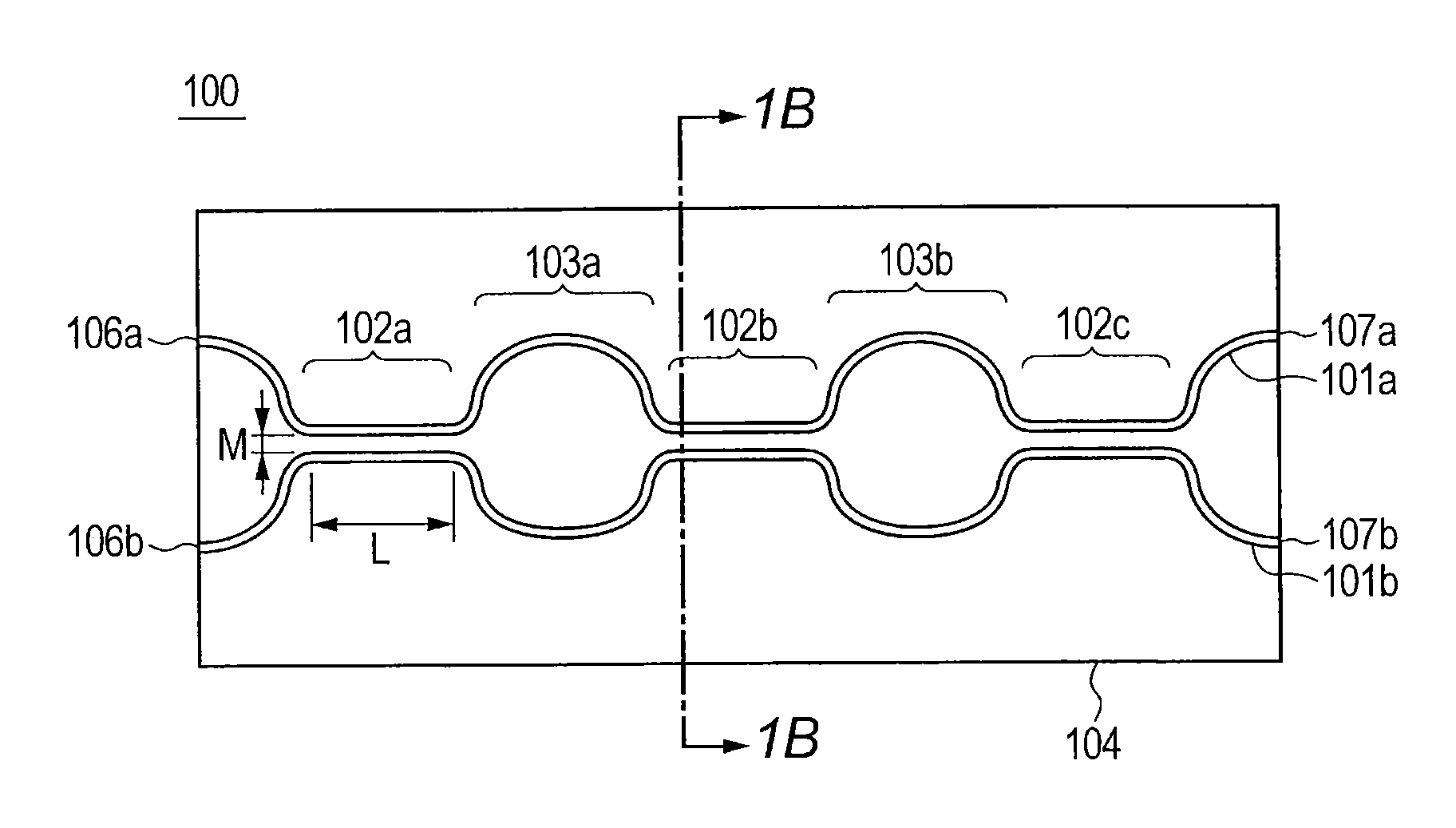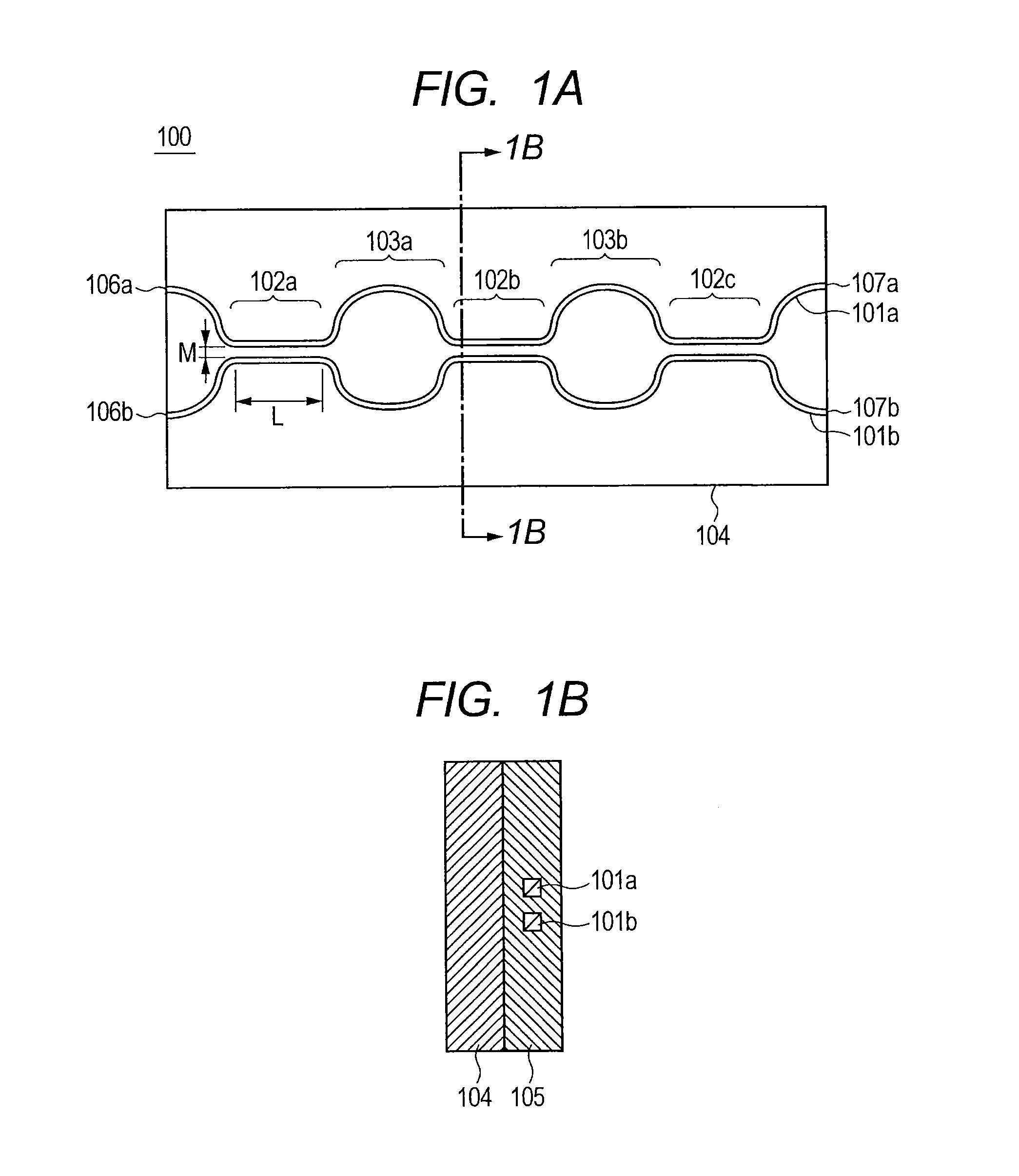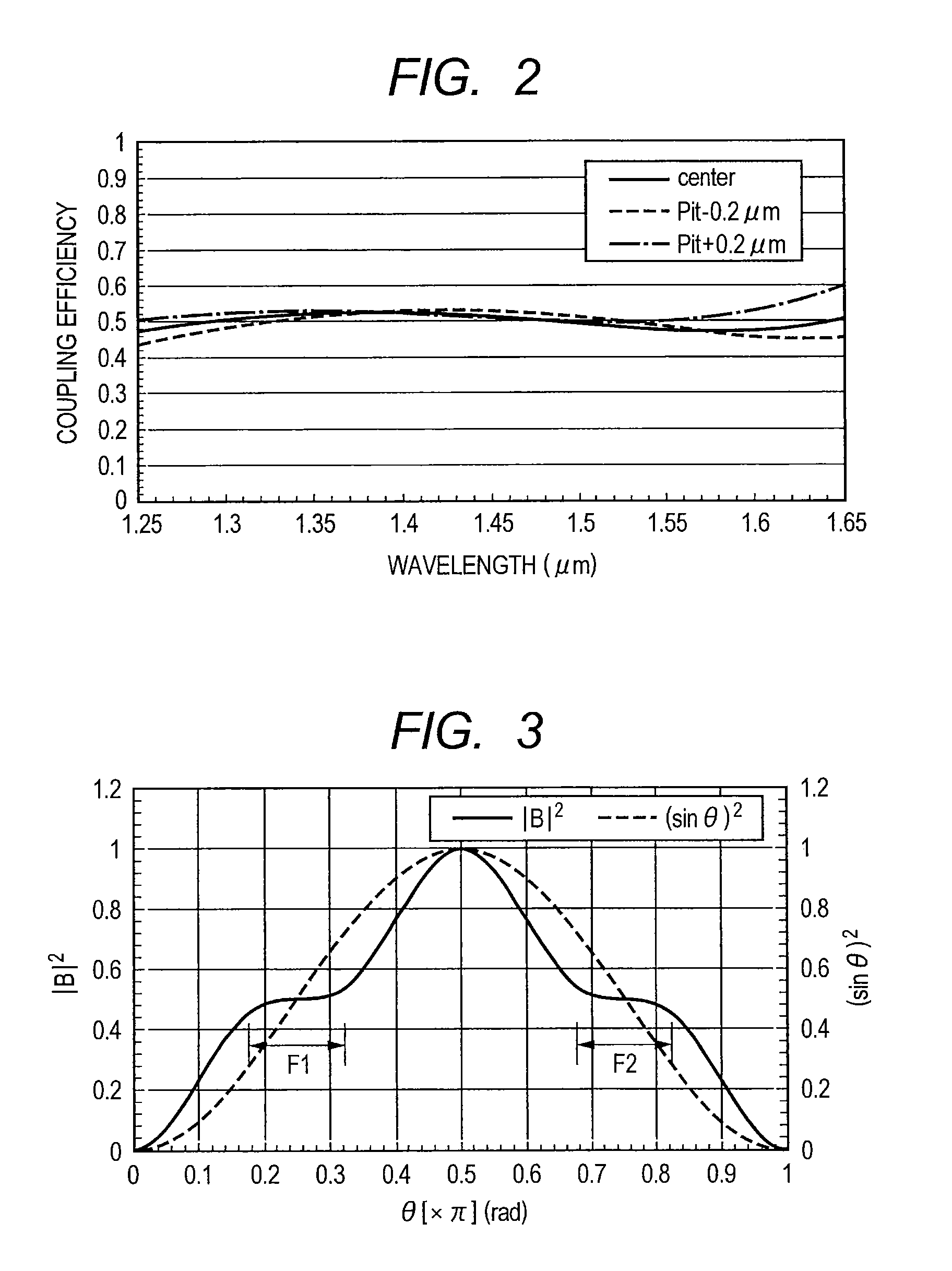Wide-band optical coupler
a wide-band, optical coupler technology, applied in the field of low-wavelengthdependent optical couplers, can solve the problems of increasing the manufacturing cost, reducing the yield, increasing the polarization dependent loss (pdl), etc., and achieves the effects of low polarization dependence, low yield, and low manufacturing cos
- Summary
- Abstract
- Description
- Claims
- Application Information
AI Technical Summary
Benefits of technology
Problems solved by technology
Method used
Image
Examples
embodiment
[0025]FIG. 1A shows a schematic diagram of an optical coupler 100 according to the embodiment. FIG. 1B shows a cross-sectional view of the optical coupler 100 taken along the 1B-1B line. The optical coupler 100 includes: a substrate 104; and a cladding layer being formed on the substrate 104 and having two waveguides 101a, 101b inside. The waveguides 101a, 101b are bent as shown in FIG. 1A to form three directional couplers 102a, 102b, 102c and two delay paths 103a, 103b. Specifically, the directional couplers 102a, 102b, 102c for coupling together two optical signals travelling through the respective waveguides 101a, 101b are each formed by bringing portions of the waveguides 101a, 101b close to each other in parallel. Moreover, the delay paths 103a, 103b for giving an optical path difference to the waveguides 101a, 101b are each formed by bringing portions of the waveguides 101a, 101b away from each other. The delay path 103a is provided between the directional coupler 102a and th...
example
[0061]An optical coupler 100 according to the present invention was manufactured and its split operation was checked. The manufacturing conditions were as follows.
[0062]Substrate: Quartz-based PLC
[0063]Relative refractive index difference: 0.4%
[0064]Width of each waveguide: 7.0 μ
[0065]Thickness of each waveguide: 7.0 μ
[0066]Pitch M: 10.8 μ
[0067]Coupling portion length L: 290 μ
[0068]Optical path difference ΔL1: −0.01 μ(phase difference: about −3.6 degrees)
[0069]Optical path difference ΔL2: 0.315 μ(phase difference: about 113 degrees)
[0070]FIG. 4A shows a graph representing a designed value for the coupling efficiency of each directional coupler included in the optical coupler 100 according to the example. In FIG. 4A, the horizontal axis indicates the wavelength and the vertical axis indicates the coupling efficiency. The solid line indicates the TM mode and the broken line indicates the TE mode. As can be learned from FIG. 4A, each directional coupler is designed in such a way that i...
PUM
 Login to View More
Login to View More Abstract
Description
Claims
Application Information
 Login to View More
Login to View More - R&D
- Intellectual Property
- Life Sciences
- Materials
- Tech Scout
- Unparalleled Data Quality
- Higher Quality Content
- 60% Fewer Hallucinations
Browse by: Latest US Patents, China's latest patents, Technical Efficacy Thesaurus, Application Domain, Technology Topic, Popular Technical Reports.
© 2025 PatSnap. All rights reserved.Legal|Privacy policy|Modern Slavery Act Transparency Statement|Sitemap|About US| Contact US: help@patsnap.com



